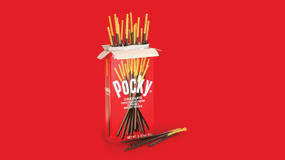INTA News
INTA Weighs in on Functionality Test in Snack Food Clash
Published: December 9, 2020
Jason Bloom Haynes and Boone, LLP Dallas, Texas, United States International Amicus Committee—United States Amicus Subcommittee
 When is a snack food design functional? That is the provocative question on petition for en banc review in the Third Circuit Court of Appeals this term. INTA voiced its view through an amicus brief filed November 30, in Ezaki Glico Kabushiki Kaisha v. Lotte International America Corp., No. 19-3010 (3d Cir.).
When is a snack food design functional? That is the provocative question on petition for en banc review in the Third Circuit Court of Appeals this term. INTA voiced its view through an amicus brief filed November 30, in Ezaki Glico Kabushiki Kaisha v. Lotte International America Corp., No. 19-3010 (3d Cir.).
Four members of INTA’s United States Amicus Subcommittee of the International Amicus Committee contributed to the brief: Subcommittee Chair David H. Bernstein (Debevoise & Plimpton LLP, USA), Bruce R. Ewing (Dorsey & Whitney LLP, USA), Jonathan E. Moskin (Foley & Lardner LLP, USA), and Claudia Ray (Kirkland & Ellis LLP, USA).
Background
The dispute centers around Ezaki Glico’s design for its snack food Pocky—a stick-shaped, chocolate-covered cookie, with a non-chocolate-covered end (or handle) designed for holding. The question is whether the design, which indisputably enables consumers to enjoy the Pocky without getting chocolate on their hands, is protectable as trade dress or “functional,” and therefore outside the scope of protection.
Ezaki Glico introduced its stick-shaped snack to the American market from Japan in 1978, and eventually registered the Pocky’s design in 1989 as trade dress with the U.S. Patent and Trademark Office. Ezaki Glico sued Lotte International America Corp. (Lotte) in the U.S. District Court for the District of New Jersey for trade dress infringement based on its sales of similar-looking, partially chocolate-covered cookie sticks.
The district court granted summary judgment in Lotte’s favor, holding that Pocky was not entitled to trade dress protection in its design because the design was functional. Ezaki Glico appealed the ruling to the U.S. Court of Appeals for the Third Circuit, which affirmed, holding that the Pocky trade dress was functional and therefore not subject to protection.
Notably, the court issued the novel ruling, stating that, as long as trade dress is “useful,” it should be considered functional and non-protectable. See Ezaki Glico, 977 F.3d 261 (3d Cir. 2020). Ezaki Glico filed a petition for rehearing en banc, seeking to have the full court reverse the panel’s decision that (i) the “usefulness” test should apply and (ii) that the Pocky trade dress was useful. INTA’s amicus brief addresses the first issue only.
INTA’s Amicus Brief
In its amicus brief, INTA argues that the Third Circuit’s new “usefulness” test contravenes controlling precedent from the U.S. Supreme Court and Third Circuit, as well as decisions on the issue from every other U.S. Circuit Court.
While INTA agrees that trade dress is not protectable if it is functional, the Association submits that the proper test for functionality is that laid out by the Supreme Court in three prior decisions: TrafFix Devices, Inc. v. Mktg. Displays, Inc., 532 U.S. 23 (2001); Qualitex Co. v. Jacobson Prods. Co., 514 U.S. 159 (1995); and Inwood Labs., Inc. v. Ives Labs., Inc., 456 U.S. 844 (1982).
Most, recently, the Supreme Court explained:
“[I]n general terms, a product feature is functional,” and cannot serve as a trademark, “if it is essential to the use or purpose of the article or if it affects the cost or quality of the article.” Qualitex, 514 U.S., at 165 … (quoting Inwood … . ). Expanding upon the meaning of this phrase, we have observed that a functional feature is one the “exclusive use of [which] would put competitors at a significant non-reputation-related disadvantage.” 514 U.S., at 165.
TrafFix, 532 U.S. at 32 (alteration in original) (emphasis added).
INTA argues that the Supreme Court’s test is not only binding precedent but is the appropriate model for determining functionality. The test properly looks to whether a product feature is essential to the function of the product as opposed to brand identity. By contrast, the “usefulness” test is far too narrow and could exclude virtually all product features from trade dress protection, including those that have received federal registrations.
By way of example, the brief notes that the Volkswagen Beetle design, which has been registered as trade dress for more than 20 years, would not be protected because the doors, bumpers, and other features are useful. Similarly, the dripping red wax on Maker’s Mark whiskey bottles would lose its established trade dress protection because it usefully seals the bottle and saves the time of cutting the wax.
INTA does not suggest that a product feature’s usefulness has no relevance to the functionality inquiry but urges “[t]hat [whether] a design feature is useful should be the beginning of the inquiry, not the end.”
While urging the Third Circuit to grant en banc review to undo the panel’s usefulness holding, INTA declined to address the sticky issue of whether the Pocky design should be held to be functional under the Supreme Court’s test.
Although every effort has been made to verify the accuracy of this article, readers are urged to check independently on matters of specific concern or interest.
© 2020 International Trademark Association